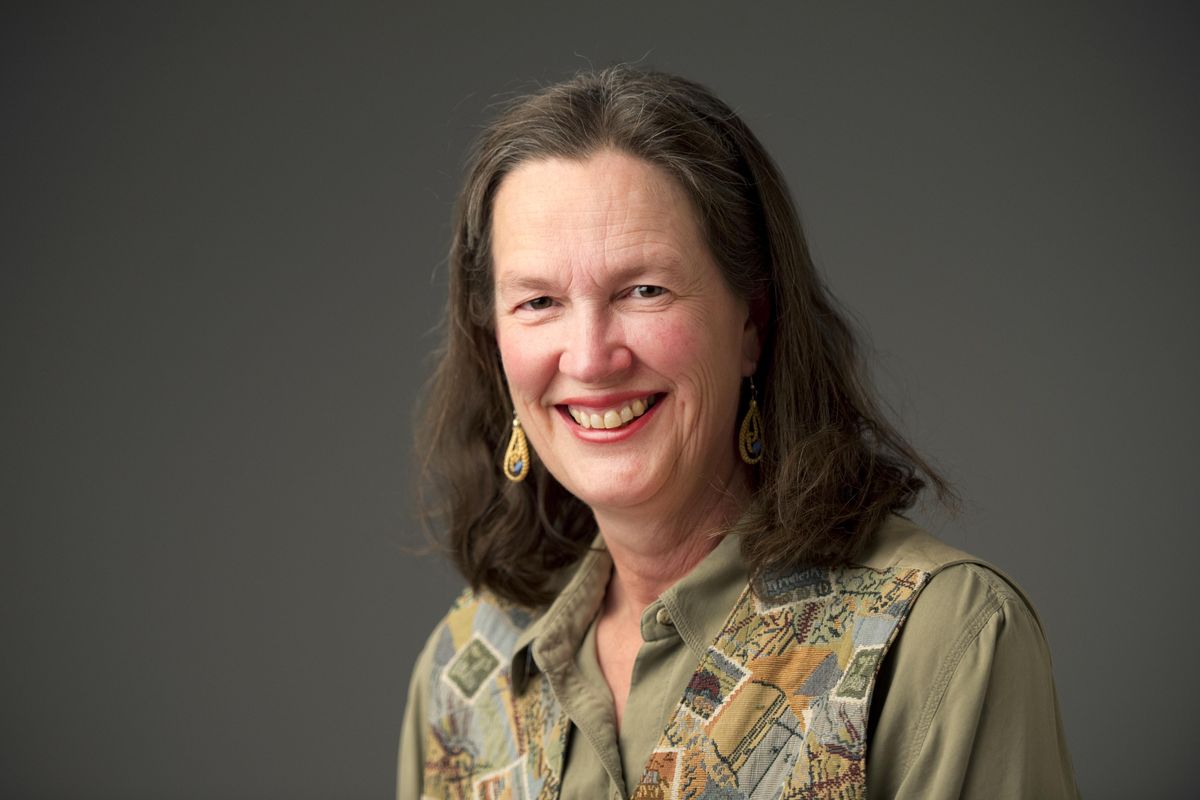Sue Lani Madsen: Despite climate change disagreement, we need common ground to battle wildfire

Last Friday night, my fellow panelists and I dutifully arrived early for the taping of “On Point” with Tom Ashbrook. It was Spokane Public Radio’s annual thank you event for underwriters and volunteers. Ashbrook usually hosts his show live from Boston, but is on a “Listening to America Tour.” Spokane was his only scheduled stop west of the Mississippi.
The blue team panelists were Peter Goldmark, former Washington state commissioner of public lands, and Cody Desautel, natural resource director for the Confederated Tribes of the Colville Indian Reservation. I represented the red team.
Turns out the green room at the Bing Crosby Theater isn’t green.
Forest firefighting experience gave us common ground, and started a warm but not heated conversation among the three of us. We could have shared stories for hours.
It’s not just forests that burn. Rangeland fires move rapidly through sagebrush. At last summer’s Sutherland Fire in central Washington, a DNR crew unfamiliar with shrub steppe fuels sat and watched instead of building a fire line, letting fire run wild across 5,500 acres of a friend’s ranch. She barely got her cows moved to safety.
Looking at Goldmark as I told this story, we both laughed. He still gets complaints even though he’s no longer responsible for DNR, the state’s largest firefighting force.
Cody updated us on his tribe’s integrated management plan for healthy and resilient forests. We all agreed loss of infrastructure in the timber industry is a barrier to good stewardship. Lawsuits from outside groups are another barrier. By default, wildfire has replaced stewardship as the primary way we manage our landscapes.
Topics for the three “On Point” segments were supposed to be wildfire, climate change and President Trump, but we stalled on climate change after I muttered to Goldmark, “I wish I could rebut your reliance on the 97percent consensus.”
Ashbrook granted my wish with a pop quiz. Which means what I should have said popped into my head two hours later. Fortunately, this column gave me two days to come up with a better comeback.
Carbon dioxide is 0.039 percent of Earth’s atmosphere, a trace gas from mostly natural sources. Models inherently ignore unmeasurable variables like complex solar weather cycles. Anthropogenic CO2 is unconvincing to more than a trace number of scientists as a single-point driver of the pace of climate change.
Thousands of years of agriculture have changed natural mineral and water cycles and the ability to capture and sequester carbon. Large swaths of Africa still rely on open fire for cooking. Investing resources into safe, clean, reliable energy in Africa would reduce carbon emissions, reverse desertification and address social injustice at the same time.
Then there’s that “97 percent of scientists agree” talking point tossed around glibly as if science was about taking a popular vote instead of constantly questioning. The statistic is not based on a survey of scientists but on a limited survey of scientific literature by a team of reviewers led by John Cook, often characterized as a global warming alarmist. It has been refuted most recently by a 2013 study by five climatologists, published in the journal Science and Education, titled “Quantifying the consensus on anthropogenic global warming in the literature: A re-analysis.”
Here’s the full abstract from that peer reviewed paper: “A claim has been that 97 percent of the scientific literature endorses anthropogenic climate change. This claim, frequently repeated in debates about climate policy, does not stand. A trend in composition is mistaken for a trend in endorsement. Reported results are inconsistent and biased. The sample is not representative and contains many irrelevant papers. Overall, data quality is low. Cook’s validation test shows that the data are invalid. Data disclosure is incomplete so that key results cannot be reproduced or tested.”
Is climate change driven by human activity? At this point, what difference does it make, according to a recent scientific study by the National Oceanic and Atmospheric Administration. NOAA concluded “to a large extent, there’s no going back.”
Our path to survival is to adapt. Our economic resources are not unlimited. We need to focus on common ground to be good stewards of resilient forests and healthy grasslands.